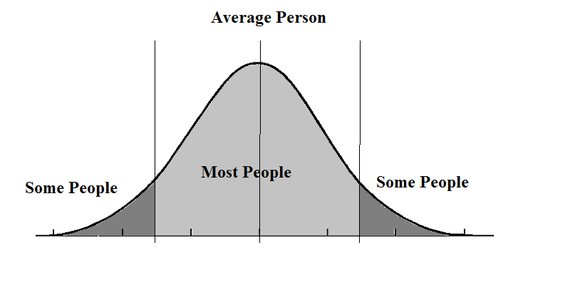Internet Outrage Mobs

Here is a theory about the effect that social media is
having on internet mob outrage. Internet
Outrage Mob, (or IOM for short) is what I’m calling the phenomenon that we see
when popular movie franchises suffer a backlash from core fans. When a random person tweets a joke in poor
taste and it gets retweeted a million times and suddenly they’ve lost their
job, friends, and are receiving death threats.
This IOM is happening in one corner of the internet or another daily
now. And I think the effectiveness or
potency of IOMs is far out of proportion to their true relevance or importance. But they tap into primal parts of our brains
and trigger effects that I think are unhealthy for society. To be clear, I’m not saying that having trolls
being toxic on the internet is unhealthy.
That goes without saying. I’m
saying the reasonable people’s reaction TO them is unhealthy and
unsustainable.
My contention is that the outsized effects of IOMs is the
artifact of something that has always existed, combined with something new. The something new, obviously, is the massive
magnification of technological networks that allow anyone of any persuasion to
find many others just like them. Social
networking allows for virtual tribes of like-minded people who never would have
found a tribe otherwise. And this is as
true for business professionals as it is for people who have sexual attraction
to helicopters. (Yes, that’s a real
thing) Which leads me to the part of the equation
that has ALWAYS been with us…. According to math, approximately half the
population is below average intelligence.
And half are below average emotional intelligence. (Not necessarily the same half) Half are below average in maturity, taste,
mental health, and any other vector you can apply to the process of getting incredibly
emotional and angry over an Asian woman in a Star Wars movie.
While this fact of math can explain some amount of Internet Outrage
Mobs, it cannot explain it all. That’s where
bell curves come in. (Which is probably
also some kind of math. I don’t have
time to look that up.)

Not only are half of any group below-average on any of these vectors, but there’s a small fringe that is FAR below-average. And guess what. The internet does nothing to tip us off as to where on that bell curve a person is coming from. Oh, and let’s not forget another vector for ridiculously emotionally stunted opinions: being a child. That’s right. That rando that just threated to rape and kill a game developer for changing the balance of their favorite weapon… is probably often an 11 year old. (If you think kids don’t talk this way, you’ve never played an on-line shooter)

Not only are half of any group below-average on any of these vectors, but there’s a small fringe that is FAR below-average. And guess what. The internet does nothing to tip us off as to where on that bell curve a person is coming from. Oh, and let’s not forget another vector for ridiculously emotionally stunted opinions: being a child. That’s right. That rando that just threated to rape and kill a game developer for changing the balance of their favorite weapon… is probably often an 11 year old. (If you think kids don’t talk this way, you’ve never played an on-line shooter)
Here’s a list of cognitive biases you and I have that make
us take the IOMs too seriously:
Availability heuristic The tendency to overestimate the likelihood
of events with greater "availability" in memory, which can be
influenced by how recent the memories are or how unusual or emotionally charged
they may be. (Since IMOs are a daily occurrence it’s always fresh in our
minds, so we over magnify the imagined group sizes in question.)
Base rate fallacy The
tendency to ignore base rate information (generic, general information) and
focus on specific information (information only pertaining to a certain case).
Clustering illusion The tendency to overestimate the importance
of small runs, streaks, or clusters in large samples of random data (that is,
seeing phantom patterns). (The perceived
size of an IOM is much larger than it probably is due to the amount of times
they pop up in our feeds)
Insensitivity to sample size The
tendency to under-expect variation in small samples. (We generally only
come across the MOST toxic of the immature mass that fills an IOM. The small
sample gives us the illusion that there are huge numbers of these people.)
Survivorship bias Concentrating
on the people or things that "survived" some process and
inadvertently overlooking those that didn't because of their lack of visibility. (In this case, “surviving” means a tweet or
meme generates so much controversy that the algorithms keep it in sight for
more people for longer.)
Third-person effect Belief that mass communicated media messages have
a greater effect on others than on themselves. (I think this fuels the
emotional compulsion to keep arguing with idiots. You’re trying to save the
more gullible people that the idiot is influencing.)
The biggest cognitive bias I used to suffer under was the idea that every voice on the internet came from a “person like me”. I can’t find the name of that one for some reason. But I tend to assume that an anonymous person is someone who is more or less like me. And of course I suffer from all those OTHER biases about how great I am compared to others, so I also apply all those attributes (and the respect they deserve) in some hazy manner on the anonymous person. So when I see a Tweet from some rando threatening to kill someone else because that someone did something they didn’t like, I’m subconsciously reading that as though a middle aged, stable, generally happy guy said it. And trying to reconcile how a mind like that would get to the point of being so terrible creates a lot of emotional heat. Heat that’s completely unnecessary if I’m fairly confident that the words are coming from someone who has obvious deficiencies that I’m lucky enough not to have to deal with.
One of my favorite things about studying cognitive biases is
to help me tune my reactions to the outside world in ways that help compensate
for the biases I’ve learned about. I’m
hoping that we as a culture have some mechanism for learning to do that. I don’t know what the best prescription for
dealing with IOMs is. But I’m almost certain
the constant elevation of fight-or-flight brain chemicals that nature pumps us
up with when we come across IOMs is NOT the best. Freaking out and perceiving that there’s some
massive population of potential rapists and murderers out there who could be
unleashed because there’s a black Spiderman or whatever, is unhealthy for
everyone. My perception may be
underselling the importance/power of this group of angry people. But I think that understanding that many of
them are literally children, mentally ill, and/or socially impotent people
gives a better perspective on the situation, or at least another lens through
which to interpret Internet Outrage Mob.
I hope this isn’t just a long winded way of saying “Don’t
Feed The Trolls”. I think there are
valid criticisms of that noelogism. There’s
no ONE correct way to deal with toxic people, their ideas, or their avenues of
expression. My hope is to spread the
idea that much of the toxicity is generated by people who are not powerful
without the algorithmic help we platform them with by forming a Counter
Internet Outrage Mob.

I think one of the big motivations for forming Counter
Internet Outrage Mobs (CIOMs) is the fear that if left unaddressed, the bad
ideas will fester and spread, pulling more people/power, moving the boundaries
of what is acceptable, thereby shaping culture in a negative way. I think this is probably true for some things that CIOMs oppose. But I’m concerned that CIOMs have become a
hammer and now every problem of toxicity is looking like a nail. I’m
concerned that the PROBLEM is NOT that there are gross things being expressed
on the internet. The PROBLEM is that
there will ALWAYS be a fringe of people who are very low on the spectrum of
intelligence, empathy, mental health, and that are Too Young To Know
Better. I think we need a better and
more healthy method for dealing with their expression. Whipping up a Counter Internet Outrage Mob
every time a person from that end of the spectrum pipes up with some toxic
comment is not a viable long term solution. Everyone has a finite amount of energy for
such things. A culture has a finite
amount of energy for such things. To
spend that energy as though there were no limit is not sustainable.
I don’t know what the long term solution is. But I feel like we can diagnose and treat the
problem better if we understand the patient better. And understanding the feeble state that many
of these people generating toxic content are in might help.


Comments